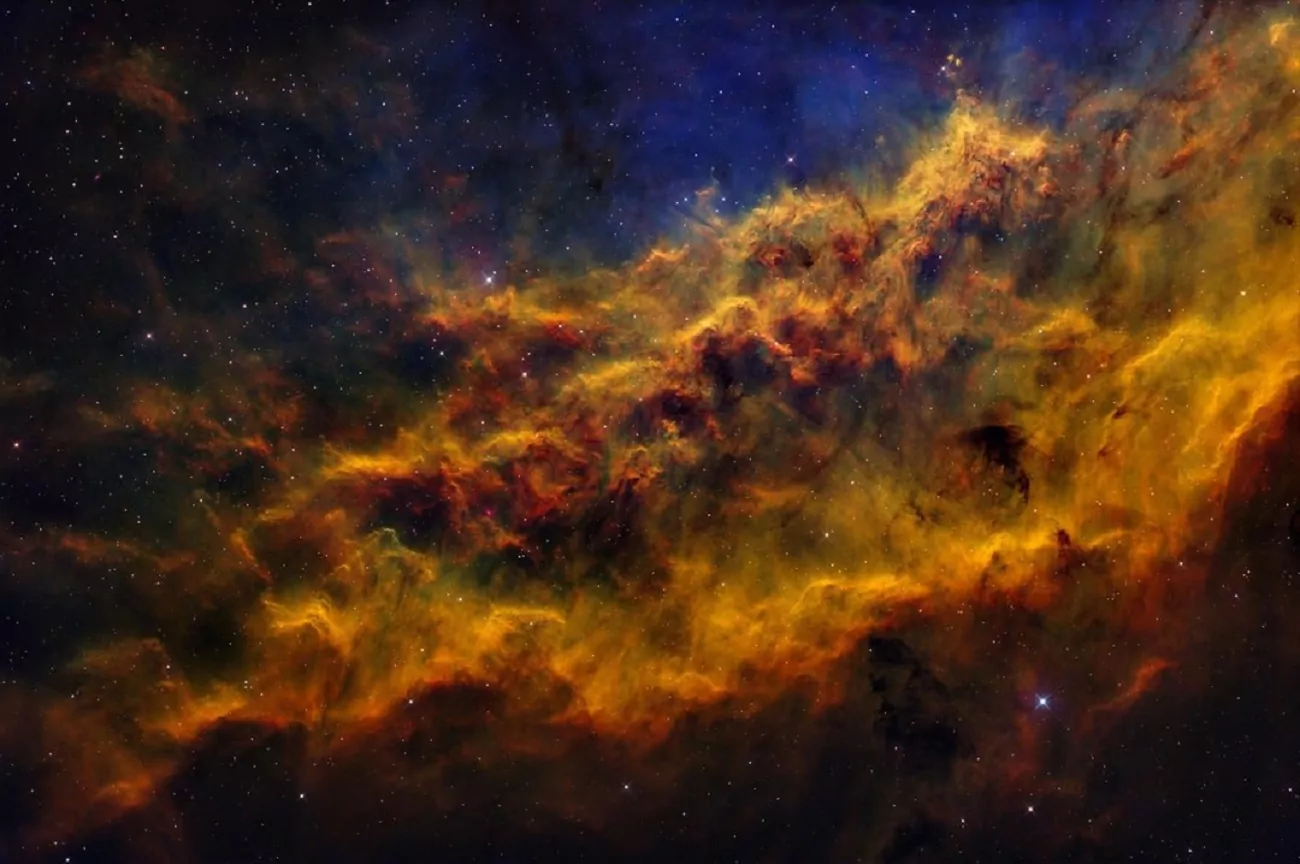The California Nebula (NGC 1499) is an emission nebula located in the constellation Perseus. It got its name due to its shape, which resembles the outline of the state of California. It is one of the bright deep-sky objects and attracts the attention of both astronomers and sky enthusiasts.
Main Characteristics:
- Distance from Earth: The nebula is approximately 1,000 light-years away from Earth.
- Size: It spans about 100 light-years in length.
- Type: Emission nebula. This means it glows due to ionized hydrogen, illuminated by the energy of nearby hot stars.
- Coordinates: It is located in the constellation Perseus, near the star Menkhib (ξ Persei), although this star does not illuminate the nebula itself.
Appearance and Glow
The nebula shines due to the ultraviolet radiation from a nearby O-type star, likely the star HD 24189. The energy from the star ionizes the gas, primarily hydrogen, causing it to emit a characteristic red light. This glow results from the recombination of hydrogen atoms and the subsequent emission of photons in the red part of the spectrum.
Discovery
The nebula was first recorded by American astronomer Edward Emerson Barnard in 1884. Barnard was known for his deep surveys of the night sky, and it was he who documented this diffuse cloud in the constellation Perseus.
Why is it called the «California Nebula»?
The name of the nebula was given because its shape resembles the outline of the state of California on a map. While this is an unofficial name, it has become widely used among astronomers and astronomy enthusiasts.
Observations
Due to its large size and relatively low brightness, the California Nebula is difficult to observe with the naked eye or through small telescopes. However, it is a popular target for astrophotographers, as long exposures capture its reddish light, typical of emission nebulae. Filters such as Hα (Hydrogen-alpha) are often used to enhance the red glow of the nebula.
Importance for Astronomy
The California Nebula is an important object for studying star formation and the dynamics of interstellar gas. Within and around the nebula, active processes related to the formation of new stars are occurring. It provides a great field for observing the effects of stellar winds and ultraviolet radiation on the surrounding gas.
In general, NGC 1499 is one of the most beautiful objects in the night sky, representing a classic example of an emission nebula and offering many opportunities to study cosmic processes.
